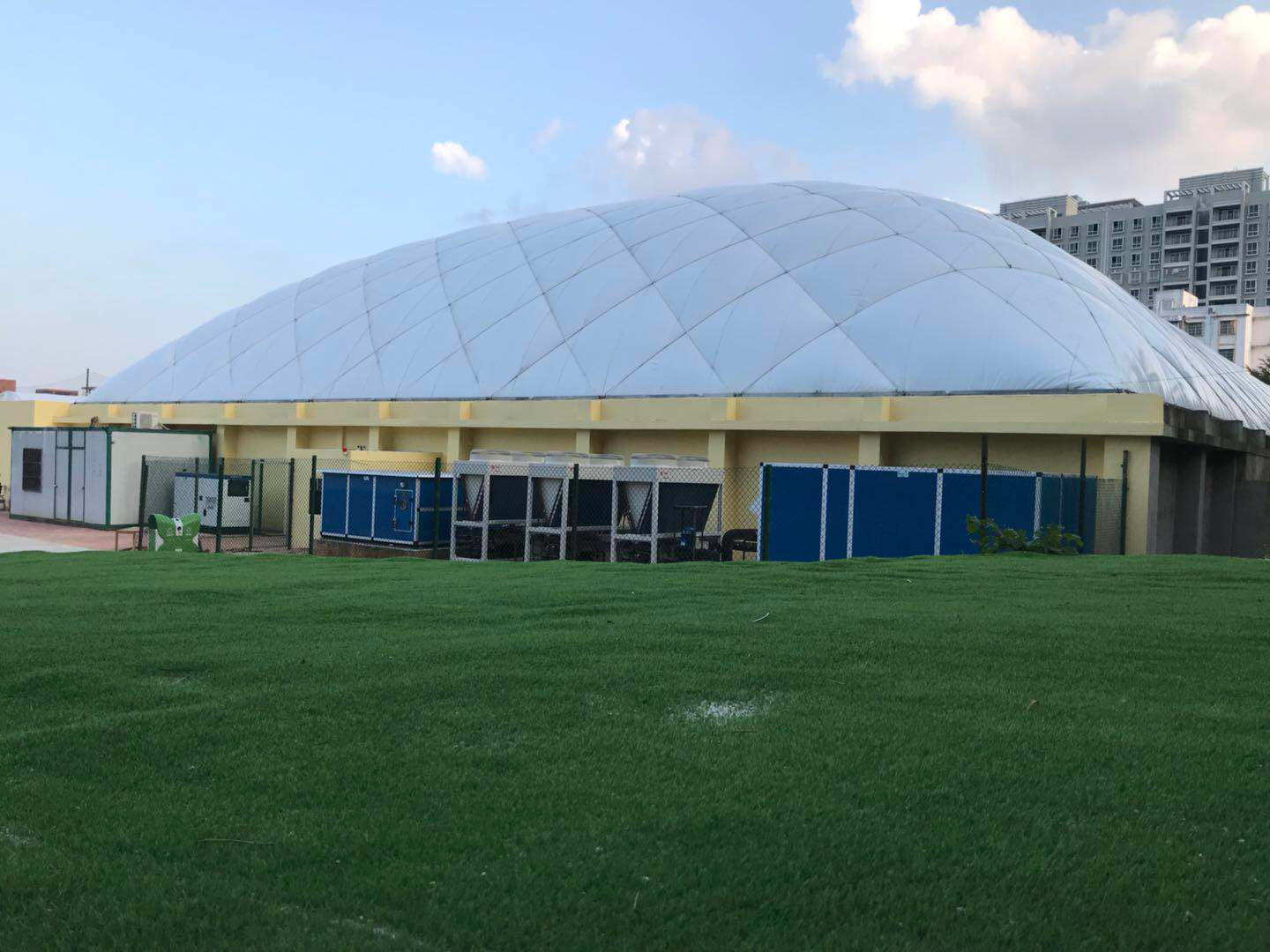A PTFE (Polytetrafluoroethylene) membrane consists of a woven fiberglass fabric, making it Class “A” 100% non-combustible (as certified by ASTM), extremely durable, and weather resistant with self-cleaning properties far superior to those of most other structural materials. The chemically-inert PTFE fiberglass architectural membranes can tolerate climatic conditions ranging well outside the most extreme environments on earth (-100°F to +450°F or -73°C to +232°C), with expected design lifespans in excess of 30 years. Its low-surface free energy easily allows for complete cleaning by rainwater alone, provides total immunity to degradation by UV radiation, and has earned PTFE-coated fiberglass membrane Energy Star and Cool Roof Rating Council certifications.

Extensive solar property testing revealed that PTFE fiberglass membranes can carry as much as 73% solar reflectivity, with just 7% exterior surface energy retention. Specific classes of PTFE fiberglass have been shown to exhibit 14% solar energy absorption, while still permitting 13% natural daylight and 7% of re-radiated solar heat transmission. PTFE fabrics typically begin their lives as an off-white or beige color, but will quickly become a brilliant stark white with tension and exposure to sunlight; and will retain their self-cleaning properties much longer than other materials used in the industry. As such, molds, mildews, fungi, and bacteria will have a much harder time breeding on PTFE surfaces as compared to fabrics of lesser quality.
Designed and installed as a permanent fabric, PTFE's fiberglass yarns maintain ultimate tensile strength of 500,000 PSI and a modulus of elasticity of 10.5 x 106 PSI compared to steel, which offers 40,000 PSI and 29 x 106 PSI respectively. Under normal conditions, the fabric behaves elastically and does not undergo significant stress relaxation or creep.
The principal element that differentiates PTFE fiberglass membrane from conventional glazing is its advantageous shading coefficient. As lighting levels increase, even cooler climates can realize overall energy savings using PTFE membrane. In very warm climates, even low lighting levels make PTFE fiberglass membrane an energy saver versus conventional systems. The savings can be more dramatic when compared with conventional sloped glazing systems.